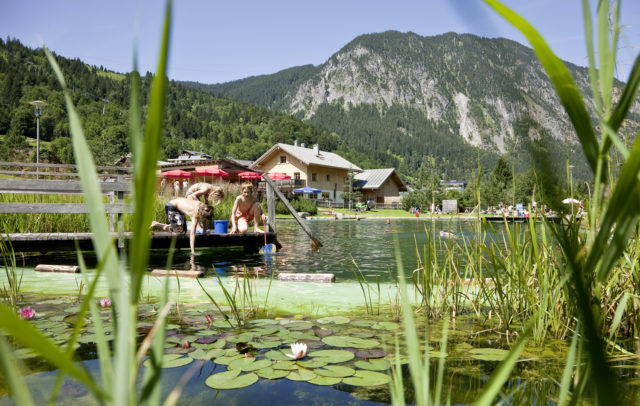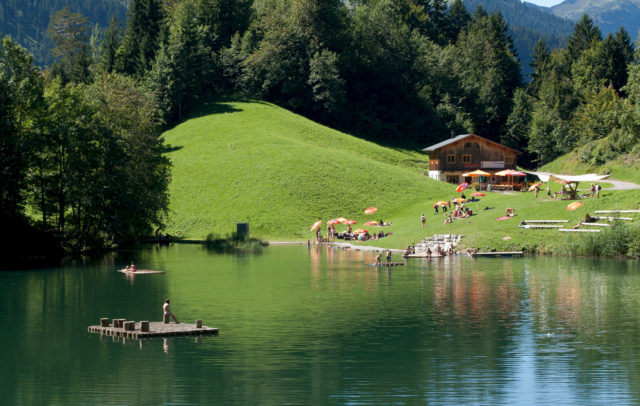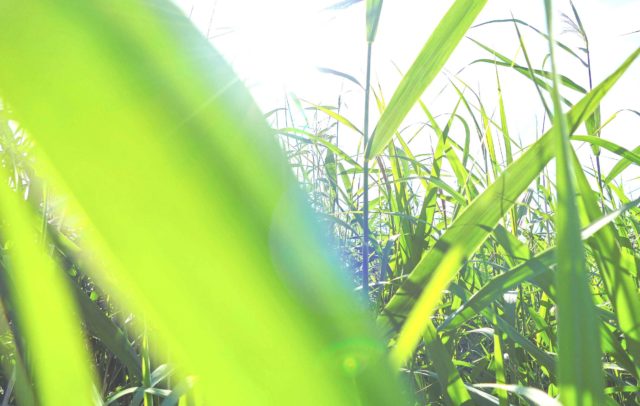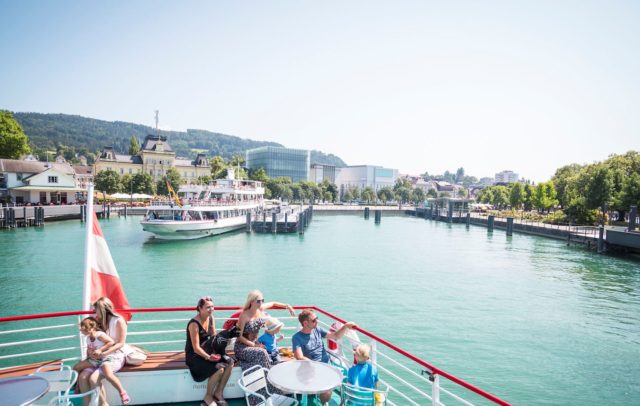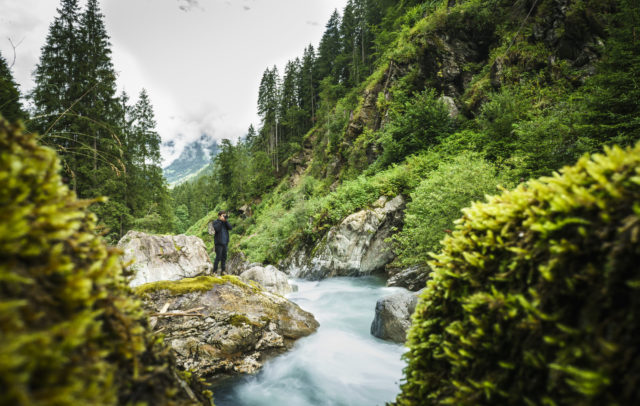
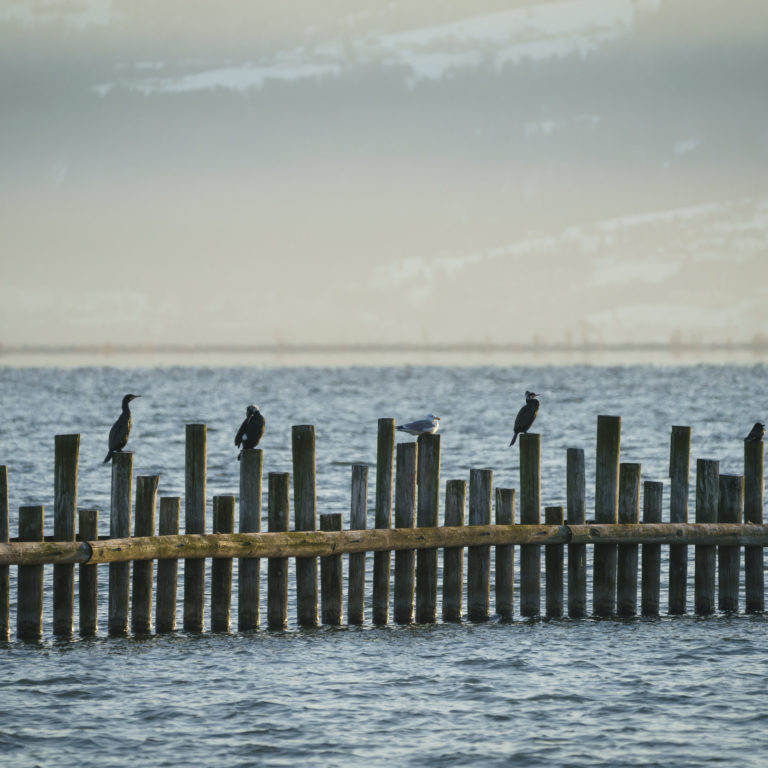
C Birdwatching in the Rhine river delta (c) Dietmar Denger - Vorarlberg Tourismus
Nature tips Vorarlberg
The water state
With 4,700 flowing waterways spanning a total length of over 5,000 km and Lake Constance as the third-largest inland body of water in Europe, Vorarlberg is truly a state shaped by water.
Despite the relatively small size of the Federal State, there are large differences in precipitation from north to south. Regions on the northern side of mountain ranges experience heavy rainfall exceeding 2,000 mm per year, while the drier regions in the south receive only about 1,000 mm annually. Yet, all of Vorarlberg is rich in water, crisscrossed by rivers that are vital not only for humans, but also for thousands of animal and plant species living in and around these waters.
Lake Constance, with its diverse structures, provides habitats for numerous species, some of which are unique in Europe. Lake Constance and the Rhine river delta are important migratory corridors and offer breeding and wintering grounds for over 300 different bird species. Tens of thousands of waterfowl spend the winter here before heading north to Scandinavia or even as far as Siberia in the spring.
Since 1942, the Rhine river delta at Lake Constance has been a protected natural area and is now recognised as a Natura 2000 area, making it one of the most significant conservation sites in Europe. The lake shores, reed belts, alluvial forests, and litter meadows provide a habitat for over 600 different species of ferns and flowering plants. The Rhine river delta is also home to rare orchids, carnivorous plants, grasshoppers, dragonflies, and nearly 700 species of butterflies. Unique to this area is the Lake Constance Forget-Me-Not, which can only be found here. Its vibrant blue flowers can be admired along the Mehrerau lakeshore of Lake Constance in May. In addition to Lake Constance, Vorarlberg’s rivers, streams, numerous lakes, and many moors serve as vital aquatic habitats. Protecting and preserving these special environments is essential so that animals, plants, and humans alike can continue to benefit from these unique ecosystems.
Nature tips for the aquatic habitat
-
01 Lake Constance Forget-Me-Not: A delicate miracle of nature
The Lake Constance Forget-Me-Not is distinguished by its delicate, sky-blue flowers arranged in small clusters. The flowers resemble tiny stars, encircled by a vibrant yellow ring. This striking contrast enhances the plant’s beauty, making it a remarkable sight along the shores of Lake Constance in spring.
The Lake Constance Forget-Me-Not is an endemic species, meaning it is found exclusively in this specific region. It is adapted to its unique habitat. The best time to admire the Lake Constance Forget-Me-Not is between April and May along the Mehrerau lakeshore.
Protection and conservation
Due to its limited distribution, the Lake Constance Forget-Me-Not is highly endangered. Efforts in Vorarlberg aim to protect and preserve this unique plant. It is crucial to avoid campfires near the Lake Constance lakeshore and prevent trampling in areas where the plant grows. Information boards in Bregenz help raise awareness and protect this rare flower along the lakeshore. -
02 Common Frog: A pond musician
The Common Frog is one of the most frequently encountered amphibians in Vorarlberg. Recognisable by its characteristic brownish-green coloration and distinct dark spots, this frog is often seen during hikes. In winter, Common Frogs bury themselves in mud, under leaves, or in burrows, entering a state of hibernation.
Protection and conservation
Common Frogs, like all amphibians in Vorarlberg, are strictly protected. Habitat loss, drying up of water bodies and fragmentation of landscapes due to roads pose significant threats to these amphibians. Creating temporary ponds or maintaining natural ponds are positive steps to preserve habitats for these animals.Tip for experiencing
Spring and early summer are the best times for observations. Bodies of water near forests or meadows are ideal places to hear the male frogs’ concert and perhaps even witness the spawning. The lively tadpoles are always a highlight for children during a nature outing. -
03 Bürser Schlucht gorge
The Alvierbach stream winds through one of Vorarlberg’s most impressive gorges, deeply cut into angular rock formations. In the heart of the Rätikon mountain range, the Bürser Schlucht gorge showcases its largely untouched natural diversity. Over millennia, the wild waters have shaped this unique landscape.
Visitors can learn about the geology at the entrance, where remnants of a major landslide loom large. The designated educational trail explains how the special conglomerates formed, which appear so different from the surrounding landscape. This variety of shapes ultimately results in a great biodiversity that is reflected in the flora and fauna. Not only do various moss wetland and fern species thrive in the gorge’s climate, but rare bird species like the Eurasian Dipper also raise their young amidst the roaring waters.
Tips for experiencing
The Bürser Schlucht gorge can be explored by the whole family along a well-maintained, narrow path. Particularly on hot days, the moist, cool climate offers a welcome change. In winter, the gorge is closed. -
04 Beaver: Nature’s architect
Around 350 years ago, humans exterminated the Eurasian Beaver in Vorarlberg due to its tasty meat, warm fur, and “beaver oil,” which was considered a remedy. In 2006, the beaver returned to Vorarlberg of its own accord. Since then, it has expanded along the waterways.
Protection and conservation
Eurasian Beavers are protected under the EU Habitats Directive. According to this directive, it is strictly forbidden to catch, injure or kill beavers, or destroy their habitats. However, the industrious activities of beavers often lead to conflicts of interest with humans. Vorarlberg has its own “beaver officer” to address these issues. www.bibervorarlberg.atTip for experiencing
As the Eurasian Beaver is nocturnal, it is rarely observed. However, fallen trees and gnawed tree trunks reveal much about their activity, such as during a walk by the mouth of the Bregenzerache river. Tip: Beaver Management Vorarlberg offers guided tours focused on beavers. -
05 Alpine Newt: A true master of transformation
The Alpine Newt is the most commonly found newt species in Vorarlberg and can be easily recognised by its brightly coloured orange underside. The Alpine Newt can be found both on land and in water. In spring, with the onset of the breeding season, it seeks out still waters where it can lay its spawn.
In June, and in higher elevations from August, the Alpine Newt leaves its aquatic habitat and ventures onto land. It is typically only seen at dusk or at night. During the day, it prefers to stay hidden under wood or stones
Protection and conservation:
The Alpine Newt is the most common newt species in Vorarlberg and can be easily recognised by its bright orange belly. Fortunately, it is still quite common in Vorarlberg. The primary threat to the Alpine Newt comes from the loss of breeding waters, especially when these bodies of water are stocked with fish.










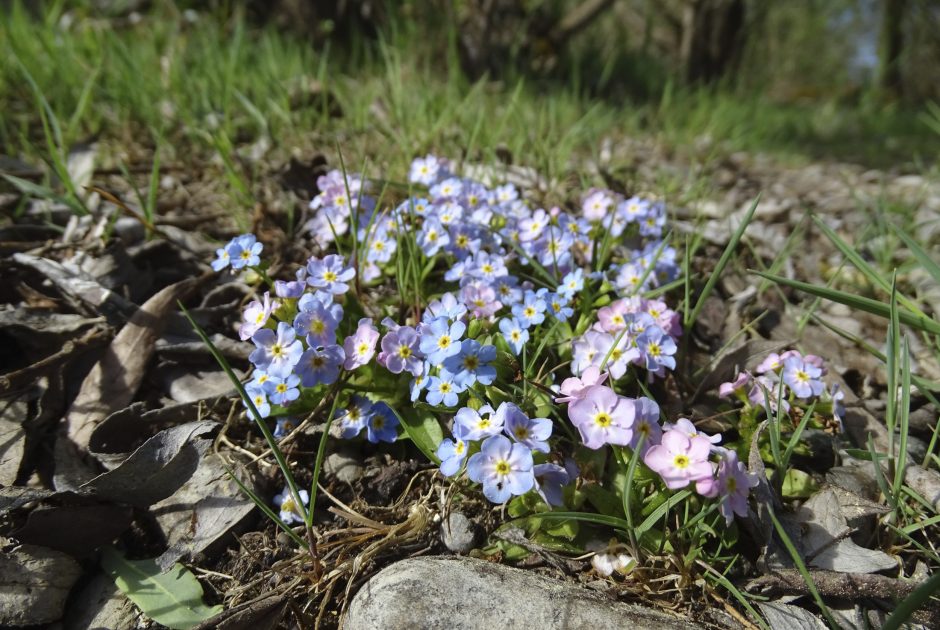
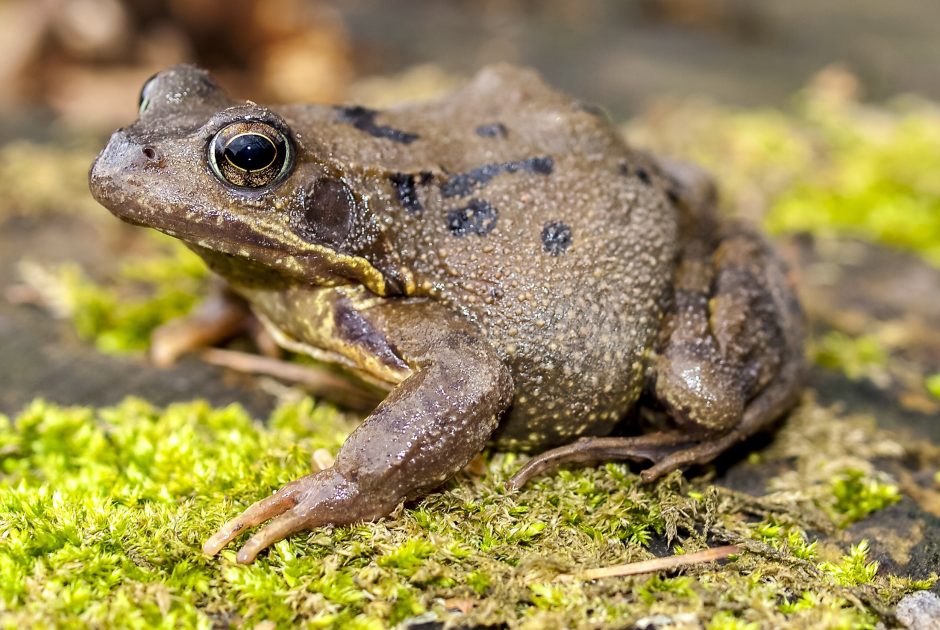
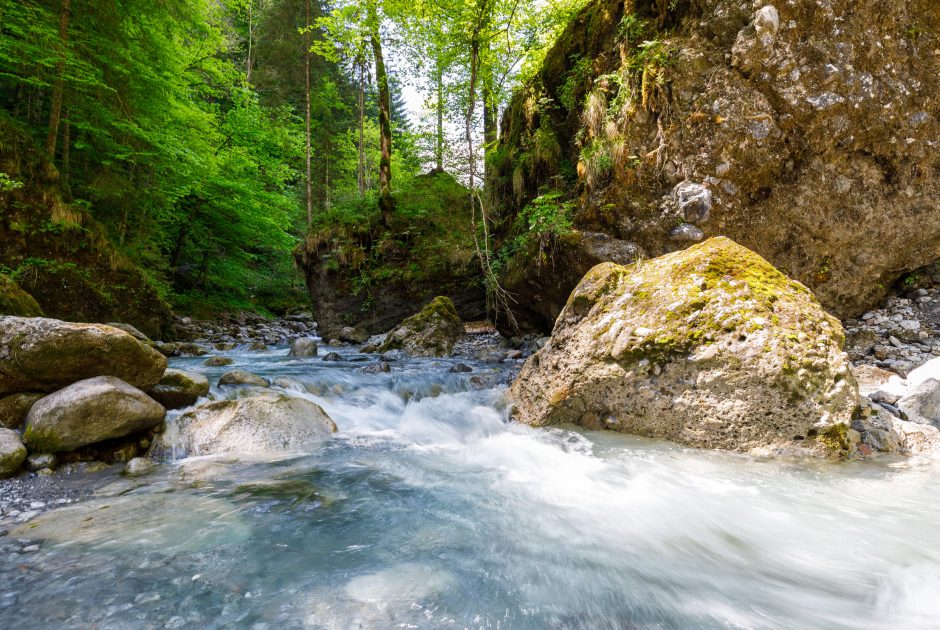
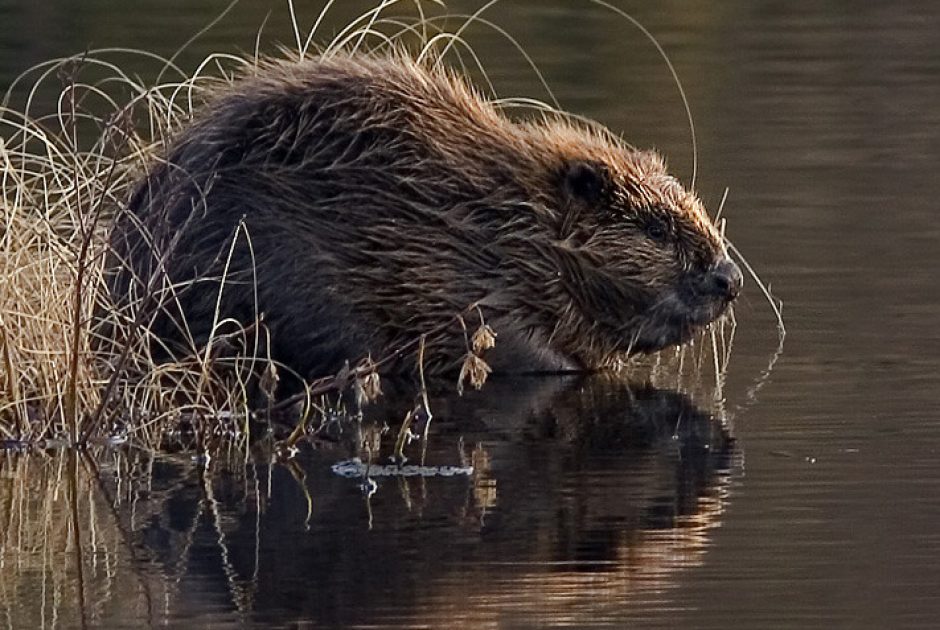
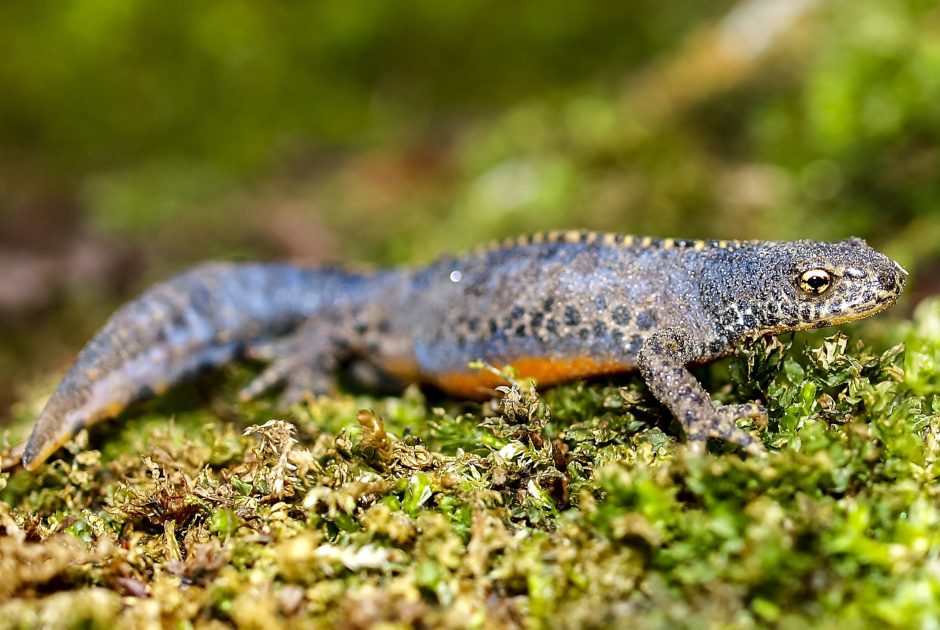
![Hanno Thurnher Filmproduktion - By Cinedoku Vorarlberg (Own work) [CC-BY-SA-3.0 (http://creativecommons.org/licenses/by-sa/3.0)], via Wikimedia Commons Der Alpenrhein mündet in den Bodensee](https://v-cloud.vorarlberg.travel/asset/df44686c-2efc-4a4a-8a7a-d0fb27523c43/8V6QKwrJPPDJEmI_FyzxU9eoUVu1UEFzzrFRVJGYPTA/1739528569/default/fill/1400/700/0/sm/der_alpenrhein_muendet_in_den_bodensee.jpeg)










































